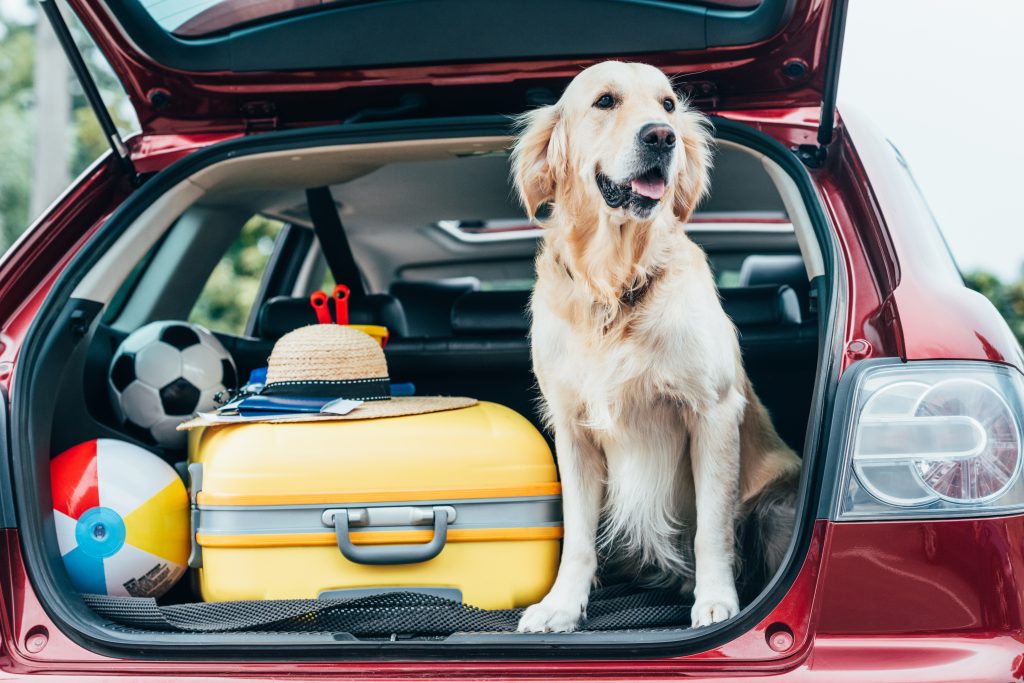
Does CBD Treat Depression?
Cannabidiol – often abbreviated as CBD – is a truly remarkable, powerful molecule of the cannabis plant that has dozens of potential health benefits in

We love our dogs, but let’s be honest: traveling with them can sometimes become an ordeal. With skyrocketing gas prices and unprecedented flight cancellations, travel is already stressful enough without having to console your out-of-sorts pet. Here we have top travel tips for dog owners.
Of course, some dogs are better travelers than others. However, regardless of how well-behaved your canine is, dog travel invariably poses unique challenges.
Whether you’re planning to hit the road, hop on a Caribbean cruise, or jet-set with your pup, consider our handful of tips offered here to ensure a smoother travel experience for both yourself and your canine.

Like all animals, dogs are creatures of habit. They are most comfortable in familiar environments, following normal routines. Deviations from that standard environment and routine, naturally, often stir anxiety.
In addition to its psychological pressures, travel can also impact dogs’ sensitive ears – especially air travel. Dogs are equally or perhaps more sensitive to “airplane ear” induced by altitude changes.
If you’ve found, from personal experience, traveling with your dog to be a challenge, you’re not alone. Scientists who study animal behavior have actually systematically documented dogs’ stress response to travel.
Here’s what researchers found, for instance, in one study of Beagles during both ground and air transport:
“Physiological variables clearly indicated that transportation, whether by road or air, was stressful for the dogs in this experiment.”
Here’s what you can do to console your dog and facilitate a smoother travel experience for human and non-human alike.
Not all travel modes are the same. Here are the most common modes of travel and their respective benefits and drawbacks to consider when you’ve got a dog in tow:

To whatever extent possible, make time to let your dog stretch his/her legs and decompress along the way.
Obviously, depending on your mode of travel, taking breaks might not always be an option. Making pit stops along the freeway, for example, during car travel is more feasible than grounding an airplane mid-flight for a pee break. Plan accordingly.
Hotel stays are often necessary during long, multi-day journeys. While any Motel 6 might work for humans unaccompanied by dogs, many businesses have strict prohibitions on pets.
Chart out your accommodations beforehand to avoid such logistical challenges. Look for hotels, campsites, or other housing units that allow dogs, have at least some free outdoor space for your dog to frolic, and are big enough to house your dog’s crate.
Bear in mind that some lodging options, even if they allow pets, have size limitations. So if you have a larger dog, ask about weight or size limits prior to arrival.
As with any activity, a little bit of pre-trip planning can go a long way. Avoid future headaches by packing everything you might need during travel. Items to bring with you might include:
We’ve previously written an extensive Sympleaf guide to CBD supplementation for pet owners. In addition to other potential benefits such as anti-inflammatory effects and seizure mitigation, CBD may exert anxiolytic (anti-anxiety) effects in dogs.
A wealth of research supports the use of CBD as a novel anti-anxiety therapeutic:
“Evidence strongly supports CBD as a treatment for generalized anxiety disorder, panic disorder, social anxiety disorder, obsessive-compulsive disorder, and post-traumatic stress disorder when administered acutely… Overall, current evidence indicates CBD has considerable potential as a treatment for multiple anxiety disorders.“
Because of its favorable safety profile and growing record of clinical efficacy, research shows that US veterinarians increasingly prescribe CBD as a frontline treatment for anxiety and other conditions in dogs.CBD works similarly in both humans and non-human mammals like dogs because of the shared structure and function of the endocannabinoid system (ECS).

So, thanks to shared biology, if you benefit from the relaxing effects of CBD, chances are your dog will as well.
Check out our full line of Sympleaf CBD products specially designed for pets – including drops to conveniently slip into your dog’s chow and delicious pumpkin-flavored CBD treats they’ll wolf down.

Whether you are interested in more information about canine travel tips, the latest cannabis products available on our digital shelves, or the potential, science-backed health benefits of CBD for both dogs and their owners, please don’t hesitate to reach out.
Contact Sympleaf and we’ll answer your inquiry ASAP.
Bon voyage!

Cannabidiol – often abbreviated as CBD – is a truly remarkable, powerful molecule of the cannabis plant that has dozens of potential health benefits in

Alzheimer’s disease (AD) – along with a host of other neurodegenerative conditions that impact brain health – is nothing short of a public health catastrophe

To date, CBD (“cannabidiol” in long-form) is the single most potent cannabis compound that researchers have isolated to research its potential health benefits. Here, we
Made in Atlanta. © FOOD AND DRUG ADMINISTRATION (FDA) DISCLOSURE These statements have not been evaluated by the Food and Drug Administration. These products are not intended to diagnose, treat, cure, or prevent any disease.